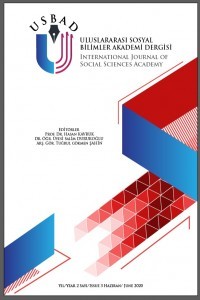
Uluslararası Sosyal Bilimler Akademi Dergisi
Yazarlar: Nesrin SİS, Emrah TÜRK
Konular:-
Anahtar Kelimeler:Turkmliterature,Mahtumkulu,Mahtumkulu Divan,Negative sentence
Özet: Mahtumkulu, who lived in Turkmenistan in 18th century and had a unique place both in Turkish literature and in Turkmen literature until today, is considered as the greatest poet of Mahtumkulu Firâkî Turkmens. In this study, the poems in Mahtumkulu Divan which was published by HimmetBiray were examined in terms of negative sentences. The aim of this study is to determine the features and characteristics of the negative sentences in the three hundred and four poems in the Mahtumkulu Divan. The research was dealt with a qualitative approach and the poems were examined by document analysis method. In the study, the negative sentences in the Mahtumkulu Divan were quantified and were classified according according to their structures and constructions. The selected negative sentences from the poems were transferred to the text by refering to the assigned page and line numbers in the book. it was concluded from the results that, in using negative sentences, the poet frequently recoursed to verbal negativity rather than the noun clauses. The frequency of these sentences, ratio to other sentences, structure and construction properties were interpreted at the end of the study.